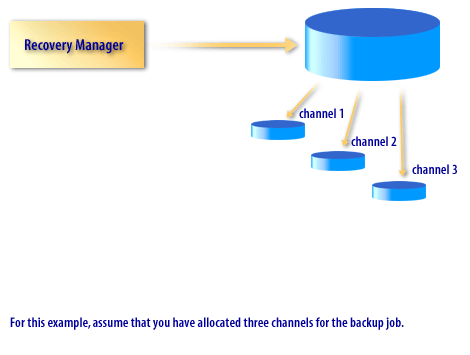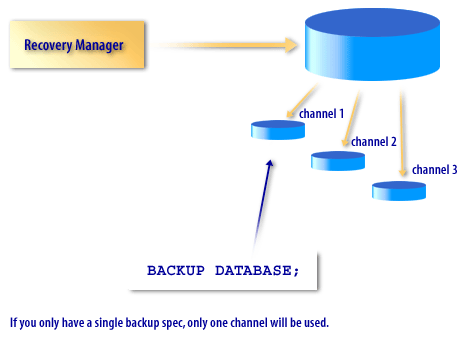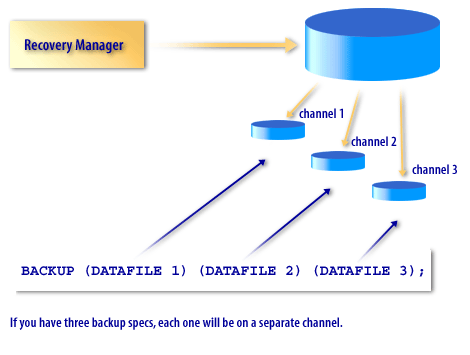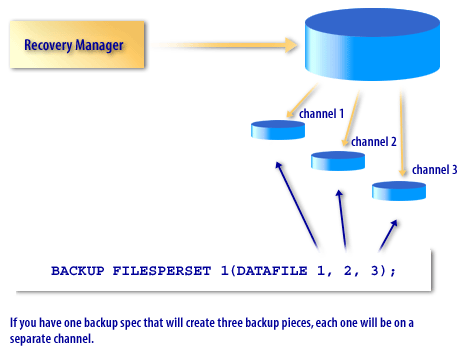| Lesson 5 | Parallelization of backup sets |
| Objective | Demonstrate how Recovery Manager parallelizes backup sets. |
Parallelization of Backup Sets
You have now learned to tell Recovery Manager how many different files you want included in a particular backup piece. As you may have suspected, this additional configuration option for backup pieces can affect how RMAN parallelizes a backup job.
Backup pieces and Parallelization
As previously discussed, Recovery Manager can parallelize backups across multiple channels. However, RMAN cannot parallelize the creation of a single backup piece. Because a backup piece is a distinct file, each backup piece can be created over only one channel. The net result of this limitation is that the degree of parallelization possible with RMAN is dependent on both the number of channels allocated and the number of backup pieces in the backup job.
Principles in action
To determine the number of parallel processes that are used in a backup job, Recovery Manager looks at several options:- The number of channels allocated: This number is the maximum degree of parallelization possible, because each process must have a dedicated channel.
- The number of backup sets: Each backup set can be assigned to a separate channel.
- The number of backup pieces: Each individual backup piece can be assigned to a separate channel.
Specific Channel
You can specify that a particular backup set be assigned to a specific channel by adding the
CHANNEL keyword and the name of the channel to the backup spec. You might want to do this if you are backing up data files, archive logs, and control files and want to direct them all to a separate location. The following Slide Show illustrates this type of backup.
Channels and backup pieces




In the next lesson, you will learn more about backup sets for data files.